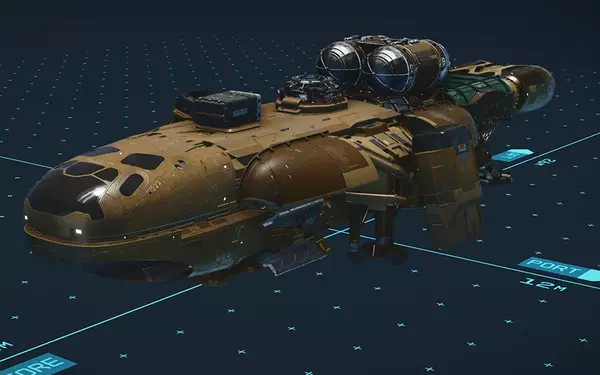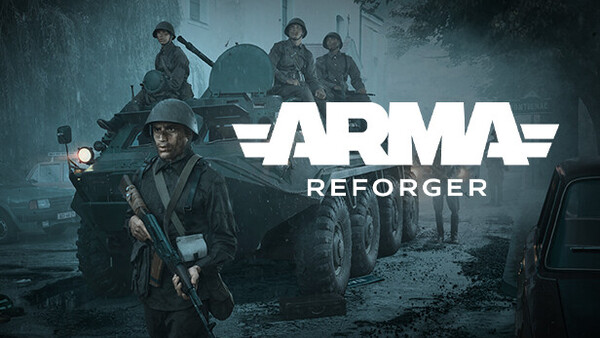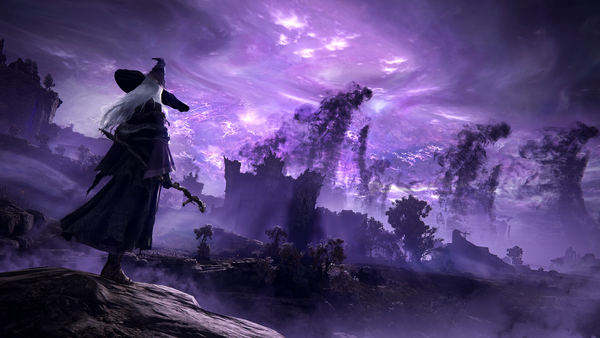Advertisement
Popular Now
Starfield*, Bethesda’s 2024 space RPG, has garnered significant attention for its expansive universe and complex systems. One of the most debated mechanics in the game is resource management. While it adds a sense of realism and depth, it can also be overwhelming, especially for newcomers. This article delves deep into *Starfield’s* resource management system, exploring its impact on gameplay, exploration, crafting, and how players can best navigate its intricacies.




The Role of Resource Management in Starfield
In Starfield, resource management is central to everything from exploration to crafting. Players must gather various materials from planets, asteroids, and space stations while managing limited inventory and ship capacity. Unlike other RPGs where resources are mostly used for crafting, Starfield intertwines resource management with almost every gameplay aspect, requiring careful planning at every stage. This system is designed to add realism, simulating the logistical challenges of space travel. However, it also complicates gameplay by forcing players to balance gathering resources with maintaining enough space to store them. It quickly becomes clear that mastering resource management is essential for success.Early Game: Overcoming Initial Resource Challenges
In the early stages of Starfield, players are introduced to the fundamentals of resource gathering and crafting. However, the sheer number of available materials can feel overwhelming, especially as players grapple with limited inventory and ship cargo space.Learning the Basics of Resource Prioritization
Early in the game, players must decide which resources to collect and which to leave behind. With limited space, prioritizing key materials for crafting essential gear or upgrades becomes crucial. This creates an initial struggle, as players are unsure which resources will prove most useful later on.Inventory Management as a Core Challenge
Inventory management becomes an early game focus as players must constantly evaluate which items to carry and which to discard. This can lead to frustration, particularly when the inventory fills up mid-mission, forcing players to make difficult decisions about what to sacrifice.Planetary Exploration and Resource Gathering
One of the core aspects of Starfield is planetary exploration, where players can mine resources. Each planet presents a unique set of challenges, from hostile environments to limited availability of certain materials. This makes planning resource-gathering expeditions a strategic process.Scanning Planets for Resources
Before landing, players can scan planets to identify what resources are available. This mechanic adds a strategic layer to exploration, as players must decide whether the resources on a planet are worth the time and risk required to gather them.Environmental Hazards and Resource Gathering
Many planets in Starfield have environmental hazards like radiation, extreme temperatures, or dangerous wildlife. These hazards force players to weigh the risks of resource gathering, as certain valuable materials may only be found on hostile planets. Choosing the right gear and protective measures becomes critical for survival during these expeditions.Cargo Management and the Limitations of Ship Capacity
The player's spaceship serves as a mobile base and storage hub, but it comes with its limitations. Cargo space is restricted, forcing players to be strategic about what they carry and when to return to base to offload resources.The Challenge of Limited Cargo Space
Cargo limitations add a persistent challenge to Starfield’s resource management. Players must constantly monitor their ship’s cargo hold and make tough decisions about what to keep. This can disrupt exploration when players need to head back to unload materials, especially if they encounter rare resources mid-mission.Upgrading Ship Cargo Capacity
As the game progresses, players can invest in ship upgrades that expand cargo capacity. While these upgrades provide relief, they come at a high cost. Players need to balance resource allocation between upgrading their cargo space and improving other essential ship systems like weapons and shields, further complicating resource management.
Crafting Systems and Resource Allocation
Crafting is a central mechanic in Starfield, requiring players to allocate resources carefully. Whether crafting new weapons, upgrading equipment, or repairing ships, every project demands specific materials, forcing players to plan their resource allocation wisely.Crafting Stations and Materials
Throughout Starfield, players will encounter crafting stations where they can refine raw materials into usable components. These stations emphasize the importance of gathering the right resources, as each crafting recipe requires specific items that may not be readily available.Prioritizing Crafting Needs
A significant challenge in Starfield is deciding which crafting projects to prioritize. Should you upgrade your weapons, build better ship parts, or craft essential consumables? Each choice requires different resources, and players often face trade-offs, especially in the early game when resources are scarce.Mid-Game: Expanding Resource Management Through Outposts
As players advance through the game, Starfield introduces outposts—resource hubs that players can establish on planets to automate material collection. This mid-game feature helps reduce the manual burden of gathering resources but introduces its own set of challenges.Building and Managing Outposts
Outposts allow players to automate resource collection, but they require a significant investment of time and materials to set up. Players must manage multiple outposts across different planets, ensuring that they function efficiently while protecting them from potential threats.Automating Resource Collection
Once operational, outposts can significantly increase resource collection, freeing players to focus on other tasks. However, maintaining and upgrading these outposts requires ongoing management, adding another layer to the game's resource system. Outpost automation becomes a crucial strategy for late-game crafting and exploration.Late Game: Navigating an Expanding Resource Network
In the late game, players have likely established a vast network of outposts, upgraded ships, and amassed an abundance of materials. However, managing this resource network becomes increasingly complex as players juggle crafting high-end gear, trading resources, and exploring new regions of space.Trading Resources for Profit
In Starfield, players can trade excess resources with factions and traders, creating a new layer of economic strategy. Deciding when to sell materials for credits and when to stockpile them for crafting projects becomes a key aspect of late-game resource management.Crafting High-End Gear
As the game progresses, crafting focuses on high-end equipment and ship upgrades. These advanced items often require rare materials, pushing players to explore more dangerous regions of space to gather the necessary components. The challenge lies in managing the logistics of gathering, storing, and allocating these rare resources efficiently.Resource Management and Faction Dynamics
Factions play a central role in Starfield, offering missions and rewards tied to resource gathering and management. Aligning with factions can give players access to unique resources and technologies, but it also introduces political dynamics that complicate resource gathering.Faction Missions and Resource Rewards
Completing missions for factions often results in valuable rewards, including resources and crafting blueprints. However, aligning with certain factions can make resource gathering in rival factions' territories more difficult, requiring careful navigation of faction politics.The Cost of Faction Rivalries
Choosing a faction may result in strained relationships with others, limiting access to resources in rival-controlled areas. Players must balance faction alliances carefully to ensure they have access to the materials they need without hindering future exploration.Ethical and Environmental Impacts of Resource Exploitation
One of the more subtle elements of Starfield’s resource system is the ethical and environmental implications of gathering materials from planets. Players are faced with choices that impact the ecosystem of planets and the story, introducing a moral dimension to the game.Environmental Degradation from Over-Exploitation
In some areas, over-exploiting a planet's resources can result in environmental damage. This not only affects the planet’s ecosystem but also depletes its resources, forcing players to consider the long-term consequences of their actions.Ethical Dilemmas
Players are often faced with ethical decisions tied to resource exploitation, such as whether to side with a faction that prioritizes profit over the planet's well-being. These decisions add a layer of narrative depth, making players consider the broader impact of their resource-gathering efforts.


















